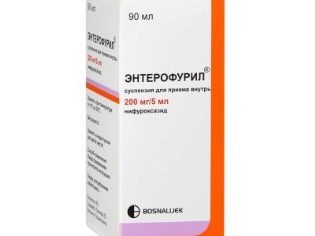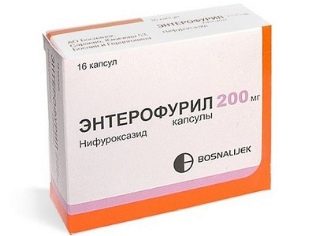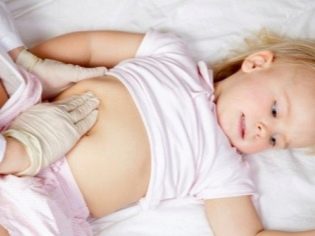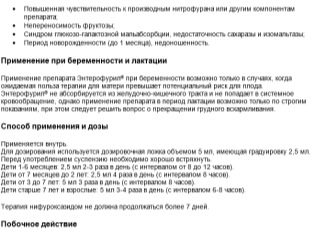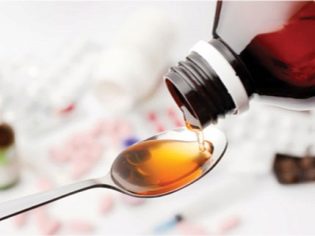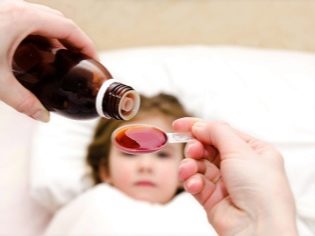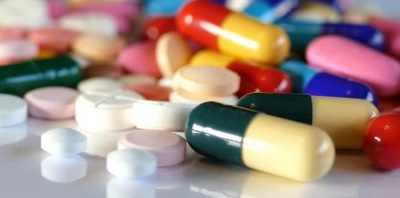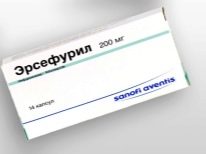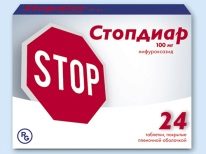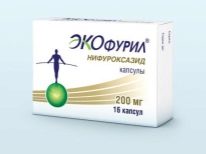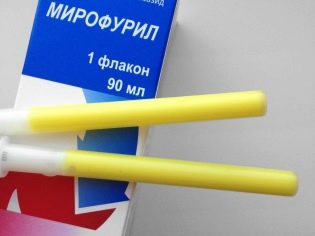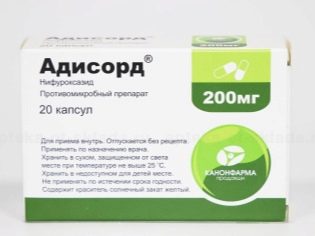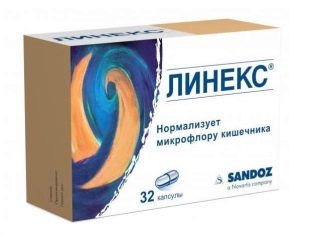"Enterofuril" for children: instructions for use
Many parents encounter diarrhea, because the digestive system of babies is very vulnerable to the action of harmful microbes. In addition, young children often taste different objects and lick their dirty hands. Especially often diarrhea occurs in the summer, when the products quickly deteriorate due to the heat, the kids walk a lot and have contact with their peers, and with animals and sand. But such an uncomfortable symptom may appear at other times of the year.
Usually, to eliminate mild diarrhea, it is enough to give the toddler "RegidronOr another drug that helps restore the balance of water and electrolytes. However, sometimes it is necessary to resort to antidiarrheal drugs, for example, to give "Enterofuril". In order for this drug to really help the child and not worsen his condition, before starting treatment it is worth knowing how it affects the children's body and in what dosages it can be used in young patients.
Release form
"Enterofuril" is made in Bosnia and Herzegovina by Bosnalek in two forms.
- One of them is suspensionwhich is sold in glass bottles, supplemented with a measuring spoon. Moms are sometimes called such “Enterofuril” as a solution or syrup, but in reality this is a homogeneous suspension and there are no other liquid forms of the medicine. One bottle contains 90 milliliters of the drug. This medicine has a yellow color and a sweet taste, and it also smells like banana.
- The second form of "Enterofuril" are capsules.which, depending on the dosage, differ in their size and color. The drug with a smaller amount of active substance has a size # 2 and a dense yellow gelatin shell, and a yellow powder is placed inside the capsule. One package of such "Enterofuril" is represented by three blisters of 10 capsules each, that is, a total of 30 capsules in a pack.
For a drug with a higher dosage, the size is larger (No. 0), the color of the casing is brown, but inside there is also a powder substance of a yellow color, as in the product with a lower dose of the active ingredient. These capsules are packaged in blisters of 8 pieces and sold 2 or 4 blisters in one carton box (16-32 capsules). In the form of tablets, injections, gel, ointment and other forms of "Enterofuril" do not release.
Composition
The main component of all forms of "Enterofuril" is called nifuroxazide. Its dosage of 5 milliliters of suspension is 200 mg, and out of 2.5 ml of the drug, the patient receives 100 mg of nifuroxazide. Yellow capsules contain this ingredient in a dose of 100 mg, and brown - 200 mg.
The list of auxiliary components of the liquid Enterofuril includes sucrose and banana flavoring, which makes the medicine tasty for young patients. And so that the drug does not spoil and remains liquid, it also adds carbomer, sodium hydroxide, 96% ethanol (it makes up 1% of the total mass of the suspension), water, citric acid and methyl parahydroxybenzoate.
The powder that is inside the Enterofuril capsules, in addition to nifuroxazide, includes corn starch and magnesium stearate, as well as microcrystalline cellulose and sucrose. The shell of this form of the drug is made of titanium dioxide, dyes (different for capsules with different dosages) and gelatin.
Operating principle
Enterofuril has the ability to influence various harmful bacteria, for which the drug is called intestinal antiseptic. Its active substance affects some biochemical processes occurring inside microbial cells, in particular, the citrate cycle and the function of dehydrogenases.
The result of such an effect will be the inhibition of the vital activity of bacteria, as well as the destruction of their membranes. In addition, under the action of nifuroxazide, the process of microbial production of toxic substances is also blocked. These healing effects help to destroy pathogenic bacteria that are found in the intestine, thereby stopping infectious diarrhea.
The drug shows significant activity against:
- pathogenic E. coli;
- Vibrio cholerae;
- salmonella;
- streptococci;
- shigella;
- staphylococcus;
- clostridia;
- campylobacter;
- Yersinia and some other microbes.
Less sensitive or generally insensitive to medication protea, providence and Klebsiella. Enterofuril does not work on pseudomonads and viral particles, however, if viruses are infected with the intestine, this medicine helps to prevent bacterial complications.
It is important to note that nifuroxazide in the digestive tract is almost not absorbed. This substance acts only in the lumen of the intestine, and then leaves the body with feces. At the same time, the preparation does not destroy the intestinal normal flora, therefore, after the use of "Enterofuril", its imbalance is not observed.
Moreover, if a child has acute microbial diarrhea, taking a suspension or capsules helps to restore normal microflora, which additionally contributes to the rapid elimination of diarrhea.
Indications
The main reason for the use of Enterofuril is diarrhea caused by harmful bacteria. The drug is prescribed for acute intestinal lesions, if the child’s general condition is not significantly worsened, there are practically no signs of intoxication, and the body temperature is not elevated.
The drug is used for dysentery, salmonellosis, giardiasis, food poisoning (eating spoiled food) and in other cases, for example, with dysbiosis, which is manifested not only diarrhea, but also constipation.
Is it vomiting?
“Enterofuril” is indeed often prescribed to children with vomiting, and parents, knowing such medicine as a remedy for diarrhea, begin to doubt whether it is necessary to give a suspension or capsules, if the disease does not manifest as a liquid stool.
The use of "Enterofuril" with vomiting is justified in the case when the disease begins to manifest itself with bouts of vomiting and severe nausea. So the children's body reacts to intoxication, which caused the disease-causing bacteria, even before the microbes multiplied in large numbers in the intestines and caused frequent liquefied stools.
In such a situation, Enterofuril helps stop vomiting and prevents diarrhea from developing (it can be used to prevent diarrhea). However, vomiting is not always a sign of a beginning intestinal infection. If she has another reason, Enterofuril will not help, and the child will need to be given other medications, for example, "Motilium».
From what age is prescribed?
"Enterofuril" in suspension can be given to children older than one month. This form of medication is strictly prohibited for premature newborn babies. If the child is more than 1 month old, use of Enterofuril should be coordinated with the doctor, as in many cases other medicines should be given to the child with diarrhea so that the baby’s condition does not worsen and there is no dehydration.
As for the capsules, they are used in the treatment of children older than 3 years. If a three-year-old child or an older patient is hard to swallow solid medicine, it is replaced with a suspension, because liquid Enterofuril can be used even by adults. The encapsulated form is used only in children who are able to swallow such a drug without difficulty.
Contraindications
Treatment with Enterofuril is prohibited:
- for patients who have found hypersensitivity to nifuroxazide or any other nitrofuran derivative;
- for children with glucose-galactose malabsorption syndrome;
- if a child has fructose intolerance;
- if the patient does not have isomaltase or sucrase.
In such cases, it is impossible to give the baby a suspension or capsules, as well as to replace "Enterofuril" with analogues with the same active ingredient. In the presence of other diseases, the use of medication is not contraindicated, but it is better to additionally consult with your doctor.
Side effects
Some young patients respond to Enterofuril with an allergic reaction. They experience angioedema, urticaria, or other manifestations of allergies, because of which the medication should be stopped immediately. In rare cases, the drug can even cause anaphylactic shock, which requires the patient to be hospitalized.
Instructions for use
Before or after meals?
The child's diet does not affect the administration of Enterofuril, since the presence of food in the intestine does not affect the therapeutic effect of the drug. This means that the medicine can be given to the child both before feeding and after eating - as it will be more convenient for the baby and parents.
The only time requirement for Enterofuril is approximately the same intervals between doses of the drug. This means that when administered twice a day, between the first and second dose (then between the second and third and so on) should take about 12 hours.
If prescribed three or four times a dose, the medication should be taken, respectively, at intervals of 8 or 6 hours.
How to give a suspension?
It is recommended to dose the liquid Enterofuril with a spoon attached to the bottle. If you dial it completely, you get 5 ml of medication. For babies of the first years of life, there is a graduation on the spoon corresponding to 2.5 ml. However, it is not uncommon for dosing to use measurements from other drugs, for example, plastic syringes for the antipyretic drug. You can also use the usual syringe without needles.
Before giving the medicine to the child, the suspension should be mixed by shaking the bottle. This will make the drug homogeneous and distribute the active substance in the liquid more evenly.
The treatment with Enterofuril in suspension for patients of different ages will be as follows:
- if the medicine is prescribed to an infant 1-6 months, the drug is given 2.5 ml. At this age, the suspension should be taken either every 12 hours (twice a day), or at intervals of 8 hours (three times a day);
- For babies over 7 months old, but under three years old, Enterofuril should be given three times a day with an interval of 8 hours. A single dose for these children is also 2.5 milliliters;
- for children older than 3 years, the dosage of the suspension at one time increase to 5 milliliters. At the same time, children of 3-6 years old are given a sweet "Enterofuril" only three times - every 8 hours. If the child is more than six years old, he can take the medication either 3 or 4 times (every 6-8 hours).
How to take capsules?
"Enterofuril" in solid form is swallowed, squeezed with water, non-hot compote or juice. Break the capsule, remove the shell and give the child only powder should not be.
A single dosage for a child older than 3 years is 200 mg, that is, young patients, regardless of age (both 3 years old and 8-10 years old or older) should be given at once or two capsules containing 100 mg of nifuroxazide each in each, or one capsule with a dosage of 200 mg.
The difference is only in the daily dosage and frequency of medication. If a child is less than 7 years old, he may be given no more than 600 mg of the active ingredient per day, which corresponds to a three-time intake of Enterofuril. Patients who have already turned seven years old receive the medication four times a day, since the effective daily dose of the drug for them is 800 mg.
How long to give children?
The duration of the suspension or capsules is determined for each patient separately, taking into account the clinical symptoms and response to treatment. On average, the course of treatment with Enterofuril lasts 5-7 days. If there is no more liquid stool in the last 12 hours, you can stop taking the medicine.
At the same time, the child should not be given medicine for more than seven days. If unpleasant symptoms still persist after a week from the start of therapy, you should consult a doctor. Inspection of a specialist is also required in a situation if 3 days have passed since the beginning of the reception, and no improvement is noted.
It is also important to show the crumbs to the doctor when the condition worsens, for example, if there are blood impurities in the fecal masses, the child complains of severe abdominal pain or he has a fever.
Overdose
There are no data on cases of overdose with Enterofuril, because the active substance is not absorbed and does not adversely affect the internal organs of a person. If a child accidentally drinks more of the suspension than it is supposed to, or takes too many capsules, you need to monitor its condition and if it worsens, consult a doctor. In most cases, with an overdose, it is enough to induce vomiting.
Interaction with other drugs
"Enterofuril" is well combined with the means for rehydration and often with diarrhea is assigned with them to prevent significant losses of water and electrolytes. It can also be used with drugs for dysbacteriosis, for example, with Linex. However, one should not combine the use of Enterofuril and drugs that have the ability to inhibit the nervous system, so as not to provoke side effects.
If the child is already taking any medication, then compatibility with Enterofuril should be checked with the doctor before starting therapy. With simultaneous use with sorbents, it must be remembered that any enterosorbent affects the action of other drugs, therefore between such drugs a pause of at least 1-2 hours should be made.
Terms of sale
You can buy any of the forms of Enterofuril at the pharmacy without any difficulties, as this is a non-prescription drug. The cost of one bottle of suspension in different pharmacies ranges from 340 to 400 rubles. For 30 capsules of 100 mg of nifuroxazide, you need to pay about 270-300 rubles, and the price of 16 capsules with a higher dosage is about 320-350 rubles.
Storage conditions
"Enterofuril" in capsules is valid for 5 years from the date of manufacture, which can be seen on the box and on blisters. Until the date indicated on the package has passed, such medicine should be stored in a dry place where the temperature will not rise above +30 degrees. In addition, the drug should be placed where it will not reach the small children.
As for the suspension, it is not required to be kept in the refrigerator. The temperature range recommended by the manufacturer for storing such Enterofuril is from +15 to +30 degrees. If the bottle is sealed, the shelf life of the drug is 3 years. Once the drug is opened, it is permissible to use it for no longer than 14 days. If 2 weeks have passed since the autopsy, the medication should be discarded, even if all the suspension from the bottle has not been used.
Reviews
Most of the reviews about "Enterofuril" call this tool effective and safe, because the drug is not absorbed into the bloodstream and can be used even in infants. According to parents and doctors, this medicine is very effective, because it affects most of the bacteria that provoke intestinal infections.
Another advantage of this medicine is the fact that resistance to it is extremely rare. Another advantage of Enterofuril is the absence of the inhibitory effect of this drug on the normal intestinal flora, that is, such a drug, unlike antibiotics, does not provoke dysbacteriosis.
"Enterofuril" in suspension is praised for its pleasant taste, but the short shelf life after opening is called its main drawback. Also, sometimes there are complaints about the high cost of medication, because of which they are looking for a cheaper counterpart.
As for the capsules, the advantages of this form of Enterofuril are the convenience of dosing and the long shelf life. Judging by the reviews, the drug is generally well tolerated, and allergy to it is quite rare.
Analogs
If it is necessary to replace "Enterofuril" with another medication (for example, if parents are interested in the drug cheaper or "Enterofuril" is temporarily absent in the pharmacy), you can use analogues, which are also based on nifuroxazide. These drugs include:
- «Ersefuril» - French medicine, manufactured by Sanofi, represented only by capsules with a dosage of 200 mg;
- "Stopdiar" - Polish drug in the form of a suspension with a banana flavor (dosage in 5 ml - 220 mg), coated tablets with a dosage of 100 mg, as well as capsules containing 200 mg of nifuroxazide;
- "Nifuroksakhid-Richter" - medicine of the Hungarian company Gedeon Richter, produced in the form of a banana suspension containing 220 mg of the active substance in 5 ml, as well as in the coated tablets of 100 mg of nifuroxazide in each;
- "Ecofuril" - Russian drug in the form of a suspension with a dosage of 200 mg / 5 ml and in capsules containing 100 mg or 200 mg of the active ingredient in each;
- "Mirofuril"- suspension with banana flavor (dosage in 5 ml - 200 mg) and capsules of 100 and 200 mg of nifuroxazide, produced by the Obninsk chemical-pharmaceutical company;
- "Adisord" - domestic medicine, represented only by capsules in two dosages (100 mg and 200 mg).
To give the child, instead of Enterofuril, other medicines with anti-diarrhea ("Imodium», «Enterol», «Loperamide"Etc.) without a doctor's prescription is not recommended. Their mechanism of influence on the digestive system and harmful microbes is different, therefore a specialist should prescribe such drugs.
In most cases, with mild diarrhea, it is enough for the child to give more drinking and change the diet to help the body get rid of the bacteria. Children with diarrhea can also be given enterosorbents, pre- and probiotics without fear (“Linex”, “Enterosgel», «Baktisubtil», «Smecta”And others.), But even the use of such drugs is better to discuss with the doctor, especially if loose stools are found in children under three years of age.
It is undesirable to give Enterofuril to the child on its own or replace it with another nifuroxazide-based medicine without consulting a doctor. It must be understood that diarrhea can be triggered by stress, malnutrition, viral infection and other factors when antimicrobial agents are not shown. Therefore, before using intestinal antiseptics in childhood, it is important to first show the small patient to the doctor.
What is it - intestinal infection? How to prevent it? How to treat? How dangerous is dehydration? There are many questions, and Dr. Komarovsky knows the answer to everything.


